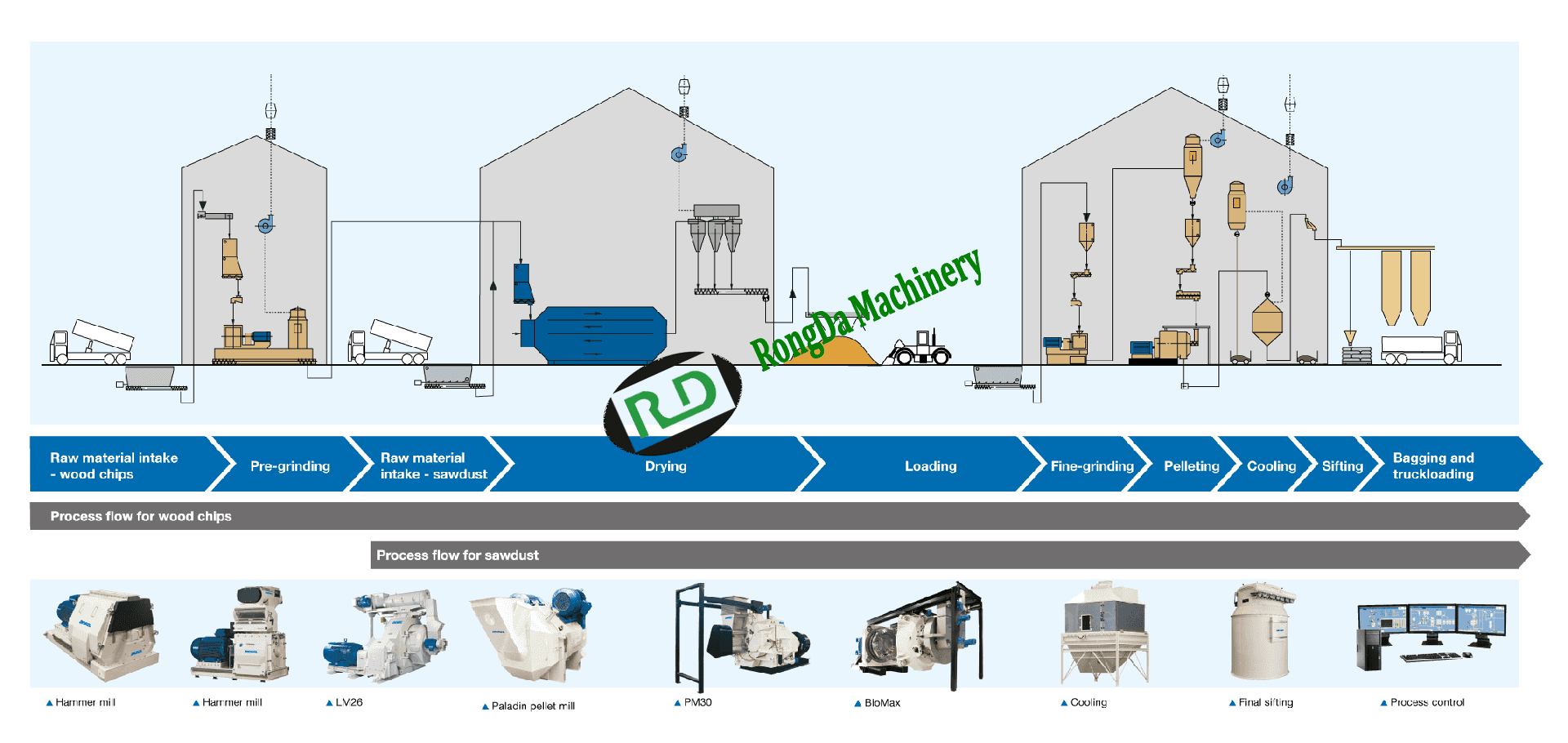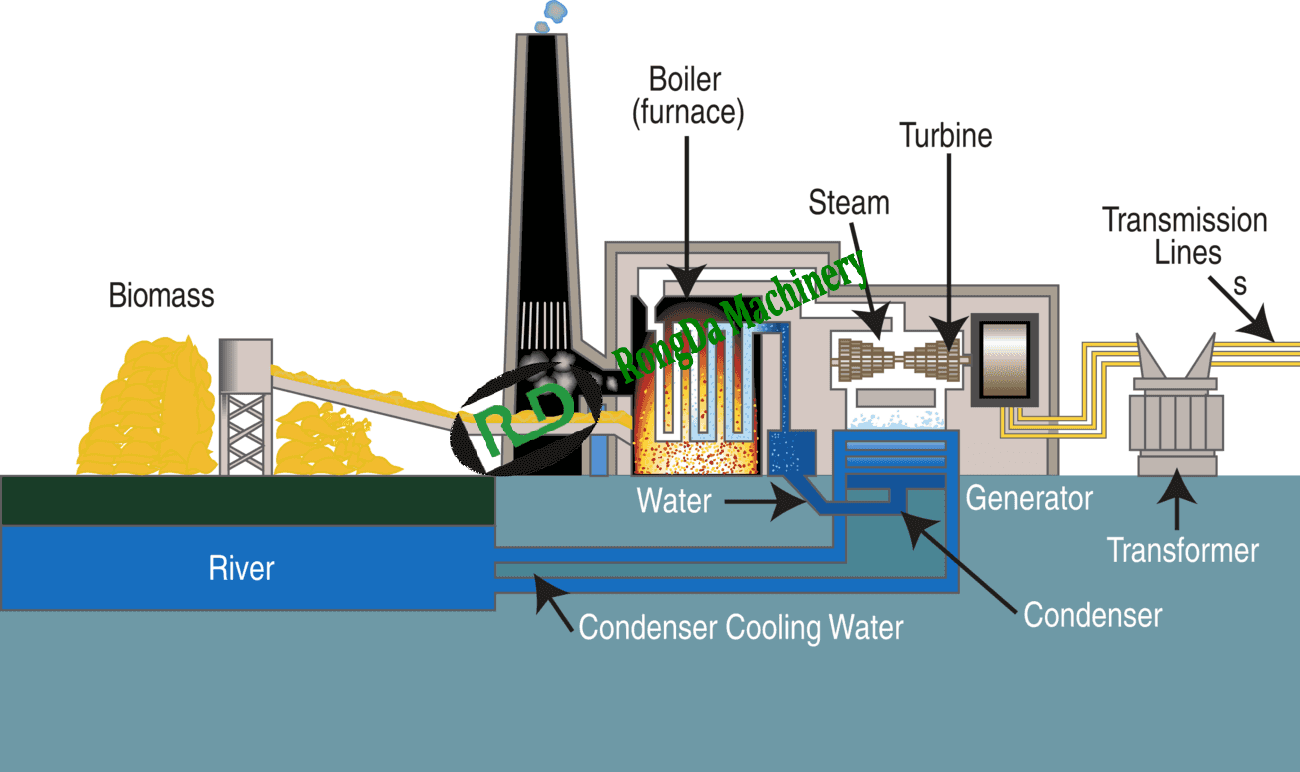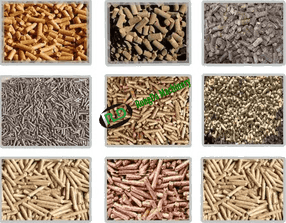Welcome to Rongda Machinery Co., Ltd
Toggle Navigation
One. A brief description of the principle of biomass pellet machine
Biomass pellet machine is one of the most commonly used core machinery in the biomass energy industry. In recent years, the production of biomass pellet fuel has attracted great attention and extensive attention.
One. A brief description of the principle of biomass pellet machine
Biomass pellet machine is one of the most commonly used core machinery in the biomass energy industry. In recent years, the production of biomass pellet fuel has attracted great attention and extensive attention. The national renewable energy industry development plan and related policies have played a huge role in promoting the promotion and application of biomass pellet fuels.
Biomass compression molding technology is a technology that compresses various biomass resources including sawdust, straw, rice husk and other agricultural and forestry wastes from the original loose raw materials into molding fuels with a certain shape and density through pressurization and heating. The application and development of biomass compression molding technology is because the general crop straw has the shortcomings of looseness, low density, low calorific value per unit volume, etc., and it is very inconvenient to use it as fuel. This is one of the main reasons why people are reluctant to use straw as fuel. Straw biomass molding technology can not only effectively solve this problem, but also effectively change the combustion characteristics of straw. After the raw material is extruded, the density can reach 0.8-1.3 t/m3, the energy density is equivalent to that of medium coal, the combustion characteristics are significantly improved, the fire power is long-lasting, the black smoke is less, the furnace temperature is high, and the storage, transportation and use are convenient, clean and hygienic, and can replace fossil energy for production and living fields. Therefore, as an important means and method of biomass conversion, compression molding technology has attracted more and more attention.
Biomass pellet fuel molding mechanism The biomass pellet machine system is to hot press the biomass without adding any binder, and the molding is mainly due to the presence of lignin in the biomass, which is amorphous and has no melting point, but has a softening point. After testing, the adhesion begins to increase when the temperature is 70-100 °C, and it can melt when the temperature is 200-30o°C. The suitable temperature for thermoforming is 140-200°C. The molding machine adopts a moving stick extrusion forming structure, when the crushed material enters the forming material chamber under the action of gravity, the pusher plate evenly spreads the material on the flat die plate, the pressure wheel rotates around the main shaft under the action of power, and rotates around the pressure wheel shaft at the same time, the material is constantly squeezed, under the action of external force, begins to rearrange the position relationship, and mechanical deformation and plastic deformation occur, and the particles are mainly combined in the form of mutual meshing. With the continuous increase of external force, the volume of biomass continues to decrease, the bulk density continues to increase, the biomass is glued internally, coking externally, and formed in the flat die hole, and has a certain shape and strength.

Two. Development status of biomass pellet fuel molding machine
At present, there are four main ways of foreign biomass molding machines, namely pellet molding machine, screw continuous extrusion molding machine, mechanically driven piston molding machine and hydraulically driven piston molding machine. The spiral extrusion molding machine is the earliest biomass hot pressing molding machine developed and produced. This type of molding machine has been dominant in the molding machine market, especially in India, Thailand, Malaysia and other Southeast Asian countries and China because of its stable operation, continuous production, and flammable forming rods (due to its hollow structure and the carbonization layer on the surface). However, one of the main technical problems restricting the commercial utilization of spiral molding machine is that the molding parts, especially the screw, are seriously worn and have a short service life; The other is the high energy consumption per unit of product.
There are two main structural forms of biomass granulation molding machines in the domestic market: flat mode and ring mode. The ring mode has a large supporting power, generally in 80-100 kW, and a special transformer needs to be configured during operation, which is not conducive to large-scale popularization; Due to its simple structure, small supporting power and low cost, the flat die machine is more and more favored by the market. However, the flat mold machine on the market has technical problems such as high energy consumption, low output, short life of wearing parts, unstable performance and poor adaptability to biomass raw materials.

Three. Biomass fuel pellet molding process
The biomass fuel pellet molding process mainly includes wet pressing molding process, hot pressing molding process and carbonization molding process. 3.1 Wet pressing molding process: After a certain degree of decay, fiber raw materials will lose a certain amount of energy, but compared with general air-dried raw materials, their extrusion and pressurization performance will be significantly improved. Normally, the raw material is soaked at room temperature for several days to make it wet, wrinkled, and partially degraded. This method is commonly used in the production of fiberboard, but it can also be used to squeeze the water out of the decayed agricultural and forestry waste and compress it into fuel blocks using simple levers and wooden molds. The test results of a research institute in the Philippines show that the productivity of this type of unit can reach lt/h, and the average calorific value of the fuel is about 23kJ/kg under the condition of 25% moisture content.
3.2 Hot press molding process: Hot press molding is a commonly used biomass compression molding process. The process can generally be divided into several links, such as raw material crushing, drying and mixing, extrusion molding and cooling packaging. Because the type of raw materials, particle size, moisture content, molding pressure, molding temperature, molding method, shape and size of molding mold and production scale and other factors have a certain impact on the molding process and product performance, so the specific production process and the structure and principle of the molding machine also have certain differences, but in various molding methods, extrusion operation is the key operation step.
3.3 Carbonization molding process. The basic feature of the carbonization molding process is that the biomass raw material is first carbonized or partially carbonized, and then a certain amount of binder is added to extrude the molding. Due to the destruction of the fiber structure of the raw material in the carbonization process, the polymer components are converted into carbon by thermal cracking and release volatile substances (including combustible gas, wood vinegar and tar, etc.), so its extrusion processing performance is improved, and the mechanical wear of the molded parts and the power consumption during the extrusion process are significantly reduced. However, the ability of the carbonized raw material to maintain the established shape after extrusion molding is poor, and it is easy to break during storage, transportation and use, so when the carbonization molding process is adopted, a certain amount of binder is generally added, if the binder is not used in the molding process, to ensure the storage and use performance of the forming block, it is necessary to have a higher molding pressure, which will significantly increase the cost of the molding machine. Considering the calorific value, environmental protection and overall cost of the molding fuel, the hot pressing molding process is currently widely used.
Four. Structural composition and overall design of biomass pellet fuel molding machine
4.1 Structural composition of biomass pellet fuel molding machine. The biomass pellet fuel molding machine is mainly composed of several parts, such as a frame, an electric motor, a reducer, a spindle, a forming material chamber, a flat mold disc, a pressure bar assembly and an electric control cabinet.
4.2 Overall design of biomass pellet fuel molding machine. Its overall design mainly includes: the determination of the technical indicators of the biomass fuel pellet molding machine, the selection of the motor model, the selection of the deceleration, the selection of the belt, the overall design of the pressure wheel, the structural design of the environment and the structural design of the main engine.
4.3 Cases. The following is a brief analysis of the 11sZL-32o biomass pellet fuel molding machine developed by Changzhi Agricultural Machinery Research Institute in Shanxi Province.
(1 frame: the frame carries the whole unit, in order to ensure safety and stability, the frame is welded by 80x 80 mm square steel, and the frame is equipped with 2 fixed wheels and universal wheels, which is easy to move and increases the flexibility of the tool.
(2) Motor: The supporting power of the machine is selected according to the work requirements of V series three-phase asynchronous motor, the model is V160M2-4-15, rated power 15 kw, speed 1440 r/min, voltage 380V.
(3 reducers.) In order to achieve the above molding, the corresponding spindle transmission mechanism must be designed to drive the pressure shaft to rotate at low speed. Due to the special molding mechanism of biomass pellets, in order to prevent the local load from being too high and the phenomenon of "Jiongjiong", K series spiral bevel gear reducer is selected. The reducer has the characteristics of strong bearing capacity, stable operation and high efficiency, the reducer is a constant speed output, and the reduction ratio is 1:10 after many tests. In order to facilitate assembly and disassembly, the input and output shafts are designed as coaxial lines, and the working speed of the pressure wheel shaft is 144r/min, which meets the design requirements.
(4) Spindle. The function of the spindle is to transmit the power of the motor to the pressure wheel shaft after the reducer decelerates and reverses, so that the pressure rod drives the pressure wheel to rotate.
(5) Forming material room. When the material enters the forming chamber from the feeding hopper, the material is evenly tiled on the flat die disc by the action of the pushing plate, and the material is formed in the flat die hole through the continuous extrusion of the pressure wheel. After molding, the fuel is cut to the specified length by a cutter mounted on the flat die pan.
(6 flat die discs.) The function of the flat die disc is to form the extruded material in its die hole. Whether the structural parameters of the flat die are reasonable or not directly determines the quality of the particles. Through the analysis of the molding characteristics of biomass raw materials, flat die discs with different compression ratios should be selected for processing different materials. The smaller the die hole compression ratio, the greater the output, but the smaller the particle density, the worse the quality; The larger the compression ratio, the smaller the output, the greater the particle density, the compression ratio is too large, and the load of the machine increases, which is easy to cause "Jiongjiong". After many tests and analysis, the compression ratio was selected as 1:5, and good results were obtained. The diameter of the die hole is designed as a cylindrical shape of cp 8 mm, and the circumferential direction is arranged in an isosceles shape, and three parameters are designed for the die hole according to the forming characteristics of the crushed material, including the preloading section, the forming section and the forming section. Through the above design, the quality and yield of the pellets have been significantly improved. Since the flat die disc is a consumable part, it is designed to be used on both sides. Using 20C: material, after quenching and other heat treatment processes, it can maintain a certain hardness and wear resistance.
(7) Pressing rod assembly. After the crushed straw is fed into the feed port, the straw is evenly dispersed to the working area between the extrusion wheel and the flat die disc mainly through the extrusion action of the extrusion wheel. In order to increase the extrusion effect of the extrusion wheel, the synchronous toothed belt tooth is designed on the outer circle of the extrusion wheel. After improvement, due to the action of rectangular teeth and the rotation motion of the extrusion wheel due to the horizontal component of the reaction force, it is more conducive to accelerate the crushed straw into the die hole of the flat die disc. Due to the large relative friction between the surface of the extrusion wheel and the straw, considering the wear resistance and working strength of the parts, the AOCR with good wear resistance is selected for the extrusion wheel material, and the carburizing and quenching heat treatment process is adopted to make the tooth surface have high hardness and improve the service life of the parts. Electric control cabinet. The electric control cabinet is mainly used to protect the motor, and it can also facilitate start-up and shutdown. The electric control cabinet is equipped with an ammeter and a voltmeter, which can monitor the current change at any time and adjust the feeding speed to achieve the best molding effect.

Five. brief summary
Energy is the blood of economic development, and its supply capacity and supply situation directly affect economic development. However, based on the conditions of energy resources, the energy supply pattern dominated by coal in China will not change fundamentally for a long time, and the direct combustion of coal is the mainstay, which has brought heavy environmental pressure. This poses severe challenges to coal-based energy consumption, energy development and energy structure optimization. In order to ensure the safe supply of energy, improve the environment, and promote the economy and society
According to China's energy resources, the development and utilization of new and renewable energy in China has its inevitability. From the perspective of long-term energy development strategy, the development and utilization of new and renewable energy sources are "zero" or "low" emission technologies, which are the basis for the sustainable development of the energy structure in the future. Therefore, the development of new and renewable energy sources, especially the conversion of them into high-grade energy, adapting measures to local conditions, and complementing each other with multiple energies, is of great significance to the coordinated development of China's social, economic and ecological environment. These also mean that the biomass pellet fuel molding machine will inevitably have a very good prospect, and the research of the biomass pellet fuel molding machine also highlights its importance.